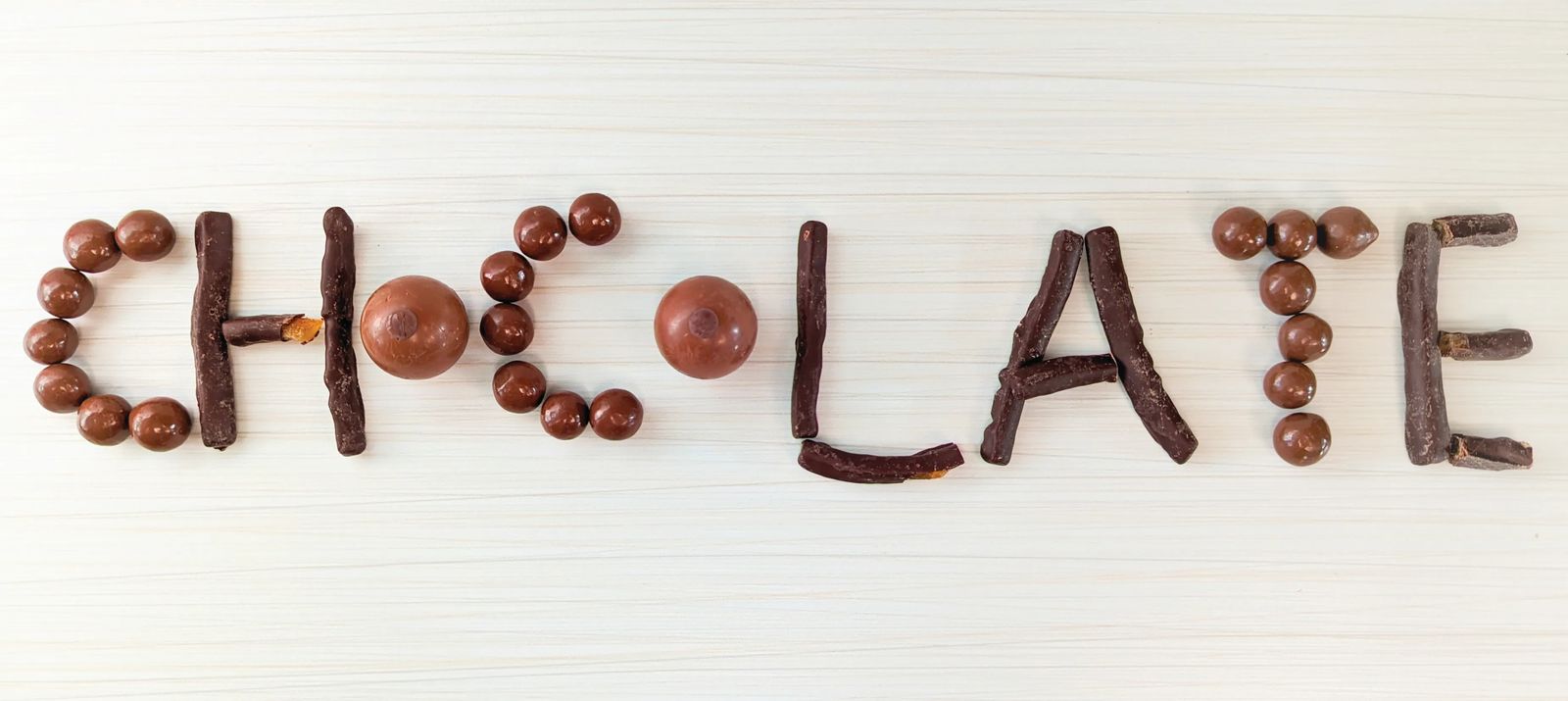
The Science Behind Our Love of Chocolate
February 2023
by stephanie hobby | photos by renata haidle
Thousands of years ago, possibly as early as 1500 BC, people in Central America made a discovery that would change - and delight - the world. Mayans - and later Aztecs - are largely credited with discovering and cultivating chocolate, but for centuries, it was consumed very differently than in modern times. Ancient people typically ground the bitter beans into a powder, mixed it with hot or cold water and spices such as chili, and drank this caffeinated concoction.
It wasn’t until midway through the second millennia AD, when cacao made its way to Europe via Spain, that it was mixed with cane sugar and other spices like cinnamon when chocolate started looking and tasting more like what we enjoy today.
Chocolate houses, at one point, outpaced the growth of popular coffee houses, and Europeans couldn't get enough of this exotic indulgence. Still, it wasn’t associated with any particular holiday until 1861, when an enterprising candymaker found a way to harness the sweet treat’s attraction to Valentine’s Day.
British chocolatier Richard Cadbury started packaging “eating chocolates” in beautiful heart-shaped boxes imprinted with cupids and roses. Even after the chocolates were long gone, Cadbury’s customers could use the boxes to store romantic mementos and love letters. From then on, February 14 became synonymous with chocolate.
There are three main kinds of chocolate: dark, milk, and white. It takes more than 800 complex chemical compounds to produce that distinct chocolate flavor, but a host of other surprising factors come into play to create the final taste.
There is some debate about whether terroir (the concept that soil, climate, and surrounding plants affect the taste of grapes and, subsequently, wine) has a similar impact on cacao plants. But we do know that the genetics of a particular plant, and its protein and carbohydrate makeup within the seeds, contribute to the flavor. Beyond what nature doles out, every step of making chocolate, from harvesting, fermenting, drying, storage, roasting, and refining, helps determine the flavor profile.
The Theobroma (literally Food of the Gods) Cacao tree, where it all begins, thrives in the warmer, humid climates of Central and South America, West Africa, and Southeast Asia and produces football-shaped yellow and green pods, a little larger than a softball. Chop it open, and you’ll find dozens of hard, dark, bitter seeds encased in a sweet, sticky, milky-white membrane.
To cultivate the desired taste, chocolate producers extract the seeds and leave them to ferment. After that, the seeds are laid out to dry in the sun. What’s left behind are the raw, dark cacao beans, to be shipped to a factory, cleaned, and winnowed from the shells, leaving behind the nibs. The nibs are then roasted to bring out the familiar chocolate aroma.
Grinding the nibs yields thick, dark cacao liquor, solidifying at room temperature. According to the journal Chemical and Engineering News, about 55 percent of this liquor is cacao butter, a fat content too high for making cocoa powder but not enough for solid chocolate candy. So, it gets processed further, with manufacturers separating the butter from the liquor. What gets left behind is solid cacao, and manufacturers pulverize it to make hot chocolate mixes and flavoring.
To make dark chocolate, candy makers combine the cacao liquor with cacao butter and sugar. The process is similar for milk chocolate, but dried milk and other flavorings, such as vanilla, are added to the mix. Confectioners use cacao butter, sugar, and milk for white chocolate but no cacao liquor.
According to the National Confectioners Association, Americans were expected to spend roughly $3.4 billion last Valentine's Day on candy. Additionally, chocolate is now also associated with other holidays, including Easter and Halloween. In fact, the average American consumes roughly 10 pounds of chocolate per year, but that pales in comparison to our counterparts in Europe (particularly Switzerland), who eat 23 pounds worth every trip around the sun. But don’t get too consumed with the calories - depending on the kind of chocolate you’re enjoying, there are some great health benefits. Not only are there ample antioxidants and riboflavin, or B2, crucial for cell growth and function, but there are trace levels of important minerals, including calcium, copper, iron, magnesium, and potassium.
Health benefits aside, most of us eat it simply because we like it. So do our brains. Phenylethylamine, or PEA, is an amphetamine-like compound naturally produced in the brain. It is also found in high concentrations in chocolate, triggering the release of endorphins and stimulating the neurotransmitter dopamine, which is closely associated with intense feelings of reward and pleasure. It also contains up to 18 milligrams of tryptophan per ounce, which is linked to another neurotransmitter associated with feelings of happiness and pleasure, serotonin.
Chocolate also contains small amounts of stimulants like caffeine and theobromine (which is especially high in dark chocolate and is particularly toxic to dogs). So it’s true that chocolate can get your heart pounding, but research is unclear on how much of that is romance-induced. But that shouldn’t stop you from gifting your sweetheart - or yourself - with some food of the gods this Valentine’s Day.
Originally printed in the February 2023 issue of Simply Local Magazine
Never miss an issue, check out SLM's digital editions here!





